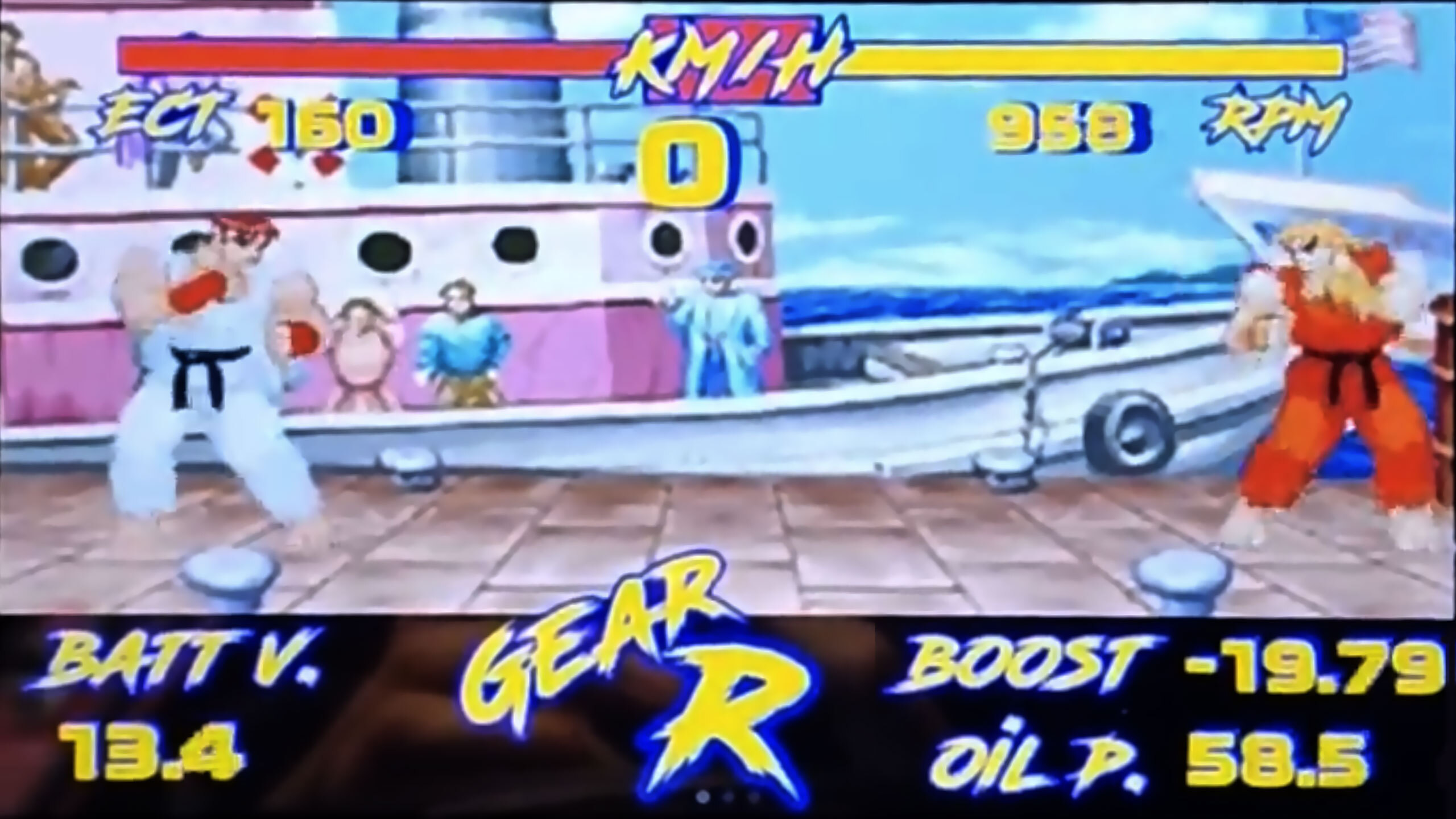The classic arcade fighter takes over your gauges with this mod.

Forget skeuomorphic design. Credit: Gasketfuka
The latest rage in automotive vehicle design is the so-called “software-defined vehicle.” Instead of dozens and dozens of discrete black boxes, each with its own legacy cruft, an SDV is a clean-sheet approach with a handful of powerful computers, each responsible for a different domain, like powertrain, safety, or infotainment. This allows for a large degree of flexibility to do things in software, whether that’s changing the handling, tweaking the UI, or boosting power output.
That’s if you’re an automaker, at least. Invariably, any customization a driver might want to do only exists within the bounds set up by that OEM. This might extend to some different UI themes, including the ability to upload your own images as a wallpaper and choose between a kaleidoscope of interior LED lighting colors. Even the full-dash, next-generation version of Apple CarPlay is yet to appear in anything production-ready.
Ars Video
How Lighting Design In The Callisto Protocol Elevates The Horror
For older cars served by the aftermarket, things are a little more free. This is all a long-winded way of saying, “Hey, check out this rad dashboard mod in a Nissan 300ZX I saw on Instagram over the weekend.”
The car in question belongs to Michael Uehli, and it’s quite far from stock. Originally a twin-turbo model, it now sports a Toyota 1.5 JZ straight six, variable valve timing, a new Garrett turbo, and some other bits and bobs that endow the car with 510 hp (380 kW) and 499 lb-ft (677 Nm). But that wasn’t what grabbed my attention—it was the Powertune digital dash with a custom Street Fighter II UI, with Ken battling Ryu.
The health bars at the top display engine coolant temperature (left) and rpm (right), and as the revs climb, Ryu fires an energy bolt out at Ken. Between the two bars is the speed display. At the bottom of the display is other useful data, like battery voltage, oil pressure, boost pressure, and the engine’s gear.
The custom UI was created by Gasketfuka, who also has some other dash layouts available, not all of which are entirely safe for work.
I don’t know about you, but I think it’s time for OEMs to get a little brave. Go on, open up those UIs a little.





